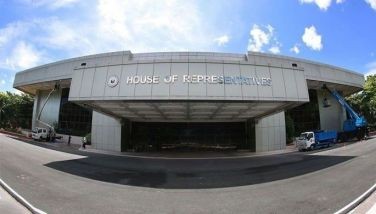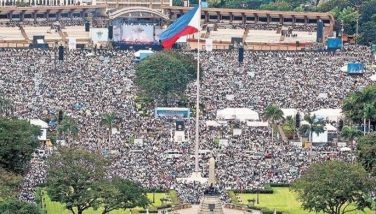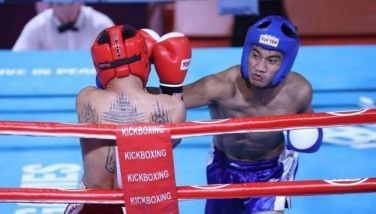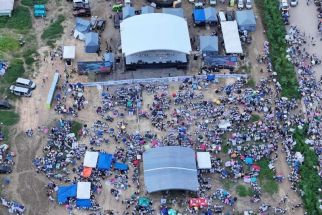Intel RP Science Fair winners bared
March 25, 2002 | 12:00am
Intel Phils. recently recognized the country’s next generation of scientists and engineers during an afternoon of scientific discoveries and activities at the Intel Philippine Science Fair national finals at the UP Bahay ng Alumni in Diliman, Quezon City.
The science fair is an annual nationwide competition that aims to promote science and technology among high school students. It seeks to identify the best and most creative among the science-inclined and technology-conscious Filipino youths who can represent the country in various international science competitions.
The individual winners for the Cluster 1 individual category (regular high schools) were: first place – Gerly Galindo of La Filipina National High School, The Evaluation of a Potential Tricoderma Harzianum on the Pathogenicity of Colletotrichum Cofeanum and Basidiomy Cetous Fungus in Coffee; second place – Sharmila Cane of Bayugan National Computer High School, Bioremediation of Mercury-Contaminated Soil and Water Using Two Cultivars of Ipomea Aquatica; and third place – Rene John Zamora of Junob National High School, Laser Alarm Switching Device.
For the team category, the winners were: first place – Mary Rose Zamora, Francis Tablizo and Rainer Hernandez of E. Rodriguez Jr. High School, The Antibacterial and Antifungal Properties of Sphagnum Junghuhnianum Linn. Extract: An Innovation in Herbal Medicine; second place – Mark Anthony Coloma, Kristine Badua and Ma. Theresa Cassandra Tolen of San Nicolas National High School, Sargassum Coffee; and third place – Ryan Rom, Grace Ann Daraug and Roy Lagman of Notre Dame Village National High School, Hydraulic Ram Pump.
For Cluster 2 (special science high schools), the individual winners were: first place – Karen Christine Braganza of Cayetano Arellano High School, Bioglass Ceramics Using Lahar; second place – Prem Vilas Fortran Moso Rara of Integrated Development School, Antibiotic Potential of the Extract from the Parotid Glands of the Toad (Bufomarinus); and Audrey Glenn Culliao of Mankayan National School, Ethyl Alcohol Produced from Amylatic Fermentation of Cellulosic Wastes.
Team Category winners for Cluster 2 were: first place – Allan Estrella, Jeric Macalintal and Richard K.S. Manapat of Manila Science High School, A Novel Application of Locally Formulated Cholesteric Liquid Crystals in Dosimetry; second place – Ben Andrew Aguirre, Rachelle Anne Pitogo and Arnel Basiliote of Mandaue City Science High School, Magnetic Drag Force of Nonferrous Conductors; and third place – Real Mame and Eleazar Vivas of Lipa City National Science High School, Potential Use of Biotech-produced B-monoglyceride as Protectant to Fruits and Vegetables Against Soft Rot Disease (Erwinia carotovora pv. Carotovora).
Investigatory projects entered in the science fair must belong to either basic sciences, computer and engineering sciences, medical sciences or other applied sciences. All projects underwent three phases: division, regional and national levels.
The Intel Philippine Science Fair is organized yearly by the Department of Science and Technology’s Science Education Institute (DOST-SEI) in cooperation with the Department of Education.
Fully sponsored by Intel, the science fair is credited for paving the way for young Filipino students to earn recognition in the international scientific arena and bring honor to the Philippines.
The top champions in the national finals (Cluster2, first and second place winners, individual category, and first place winner, team category) will be flown all the way to the United States, on an all-expense paid trip, to represent the country in the Intel International Science and Engineering Fair (Intel ISEF) in Kentucky.
The science fair is an annual nationwide competition that aims to promote science and technology among high school students. It seeks to identify the best and most creative among the science-inclined and technology-conscious Filipino youths who can represent the country in various international science competitions.
The individual winners for the Cluster 1 individual category (regular high schools) were: first place – Gerly Galindo of La Filipina National High School, The Evaluation of a Potential Tricoderma Harzianum on the Pathogenicity of Colletotrichum Cofeanum and Basidiomy Cetous Fungus in Coffee; second place – Sharmila Cane of Bayugan National Computer High School, Bioremediation of Mercury-Contaminated Soil and Water Using Two Cultivars of Ipomea Aquatica; and third place – Rene John Zamora of Junob National High School, Laser Alarm Switching Device.
For the team category, the winners were: first place – Mary Rose Zamora, Francis Tablizo and Rainer Hernandez of E. Rodriguez Jr. High School, The Antibacterial and Antifungal Properties of Sphagnum Junghuhnianum Linn. Extract: An Innovation in Herbal Medicine; second place – Mark Anthony Coloma, Kristine Badua and Ma. Theresa Cassandra Tolen of San Nicolas National High School, Sargassum Coffee; and third place – Ryan Rom, Grace Ann Daraug and Roy Lagman of Notre Dame Village National High School, Hydraulic Ram Pump.
For Cluster 2 (special science high schools), the individual winners were: first place – Karen Christine Braganza of Cayetano Arellano High School, Bioglass Ceramics Using Lahar; second place – Prem Vilas Fortran Moso Rara of Integrated Development School, Antibiotic Potential of the Extract from the Parotid Glands of the Toad (Bufomarinus); and Audrey Glenn Culliao of Mankayan National School, Ethyl Alcohol Produced from Amylatic Fermentation of Cellulosic Wastes.
Team Category winners for Cluster 2 were: first place – Allan Estrella, Jeric Macalintal and Richard K.S. Manapat of Manila Science High School, A Novel Application of Locally Formulated Cholesteric Liquid Crystals in Dosimetry; second place – Ben Andrew Aguirre, Rachelle Anne Pitogo and Arnel Basiliote of Mandaue City Science High School, Magnetic Drag Force of Nonferrous Conductors; and third place – Real Mame and Eleazar Vivas of Lipa City National Science High School, Potential Use of Biotech-produced B-monoglyceride as Protectant to Fruits and Vegetables Against Soft Rot Disease (Erwinia carotovora pv. Carotovora).
Investigatory projects entered in the science fair must belong to either basic sciences, computer and engineering sciences, medical sciences or other applied sciences. All projects underwent three phases: division, regional and national levels.
The Intel Philippine Science Fair is organized yearly by the Department of Science and Technology’s Science Education Institute (DOST-SEI) in cooperation with the Department of Education.
Fully sponsored by Intel, the science fair is credited for paving the way for young Filipino students to earn recognition in the international scientific arena and bring honor to the Philippines.
The top champions in the national finals (Cluster2, first and second place winners, individual category, and first place winner, team category) will be flown all the way to the United States, on an all-expense paid trip, to represent the country in the Intel International Science and Engineering Fair (Intel ISEF) in Kentucky.
BrandSpace Articles
<
>
- Latest
Latest
Latest
October 24, 2024 - 11:20am
October 24, 2024 - 11:20am
October 14, 2024 - 11:00am
October 14, 2024 - 11:00am
October 11, 2024 - 12:49pm
October 11, 2024 - 12:49pm
September 30, 2024 - 8:00am
September 30, 2024 - 8:00am
September 26, 2024 - 2:00pm
September 26, 2024 - 2:00pm
September 3, 2024 - 1:00pm
September 3, 2024 - 1:00pm
Recommended






























